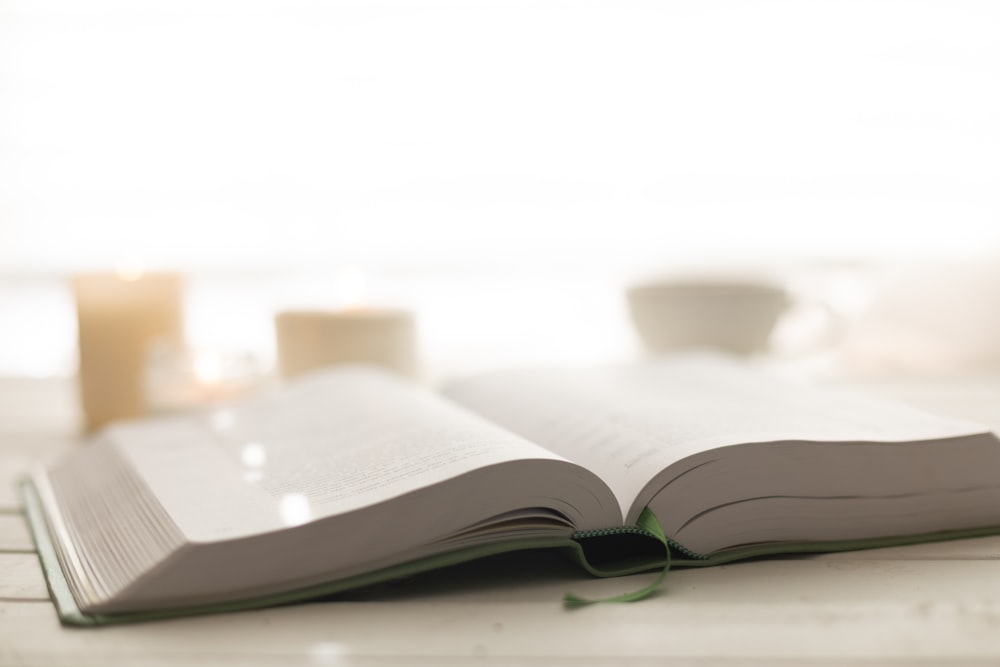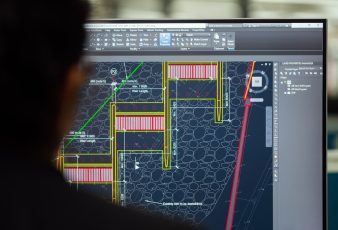Books and booklets are made for a variety of reasons. The book may be a creative project, like poetry or fiction, or it may be a flipbook of photographs, or even an instructional manual.
While the content of the book is most important, how the book is presented matters too. One of the main things to consider is the binding.
Two of the most common, and most professional-looking types of binding are saddle stitch and perfect bound binding.
Things to Consider When Choosing a Binding for Your Book
1. The Length of Your Book
Saddle stitch books are usually stapled, rather than stitched and are a cost-effective option for books and booklets between 8-92 pages. The books themselves are flexible, and they usually have a fast turnaround from the printer.
Perfect binding is a style of binding that produces a flat spine, providing another surface to print on.
Most often the title of the book, and perhaps the author’s name are printed on the spine, and it makes the book easy to identify when it is placed on a bookshelf.
Books need to be a bit longer in order for perfect binding to be a viable option, with a minimum page count of 28 pages.
2. Your Audience
Depending on the purpose of your book, and who you want to read it, your priorities over what the finished product looks like may shift.
If the book is 92 pages or less, saddle stitch is the less expensive option, however, longer books may experience “page creep,” where inner pages stick out further than outer ones.
If you are collecting recipes for a family reunion or distributing a hard copy of job instructions to people in your business, these aesthetic issues might not be important enough to offset the added cost of perfect binding. In shorter books and booklets, “page creep” is barely noticeable.
If you are looking to make an impression on readers, clients (or potential clients), or just want a professional look and a sturdy book, perfect binding may be the better choice, especially if your book is on the longer side.
Perfect binding is often used for catalogs and magazines as well as books. If you are looking at a wider level of distribution and/or sales, the professional look of perfect binding is often worth the extra expense.
3. Your Budget
If you are in the early stages of a project and want to be able to have more copies printed saddle stitch binding may mean the difference between getting your book made vs. not getting it made.
Shorter product catalogs, poetry collections, or fairly simple instructional material may be fine for saddle-stitched printing.
If you aren’t planning on keeping the book on a shelf, and don’t need printing on the binding, the cheaper option might make the most sense.
However, there are times when you need to spend money to make money. This is why many people see perfect binding as an investment.
The finished product looks and feels more durable and professional, which can lead to higher sales, whether it is a novel or a product catalog, or something else.
Your printed products can also say a lot about your brand and can impact your reputation, even if it is in a subtle way.
Sometimes, you may have to make a decision about where your money is spent. Do you want to slate a higher amount for perfect binding only to sacrifice the number of copies or whether or not you are able to use color in your project?
There are many decisions involved in book or booklet printing. Choosing the binding is only one of them.
What Type of Binding is Best For Your Project?
What Makes Perfect Binding So Desirable?
If you walk through a bookstore or library, the majority of the softcover books you will see will likely have perfect binding.
In many ways printing a softcover book with perfect binding is a more affordable option than producing a hardcover book. It also provides many of the benefits of a hardcover without the added weight.
Rather than being stapled or sewn, a perfect bound book’s pages are glued together with sturdy and flexible glue. A heavier cover is placed on the outside of the book, which is made from cardstock or heavy paper.
The outer surface features a squared spine, which often has information about the book that will help make it easier to distinguish it from other books.
Unlike saddle stitch books, the pages are not folded but are stacked. This makes the feel of the pages smoother and helps the books stand securely on a shelf without folding or bending.
Many choose perfect binding along with print on demand (P.O.D) printing when they are not sure how many copies will be needed.
Books that are meant to be saved, like novels, annual reports, job manuals, and others can benefit from the sturdiness of perfect binding.
Because the pages are stacked, “page creep” that occurs in saddle stitch books is minimized, but the pages are still trimmed as necessary to make sure that the edges are clean and smooth, and provide the most “perfect” first impression possible.
Read Also:






























